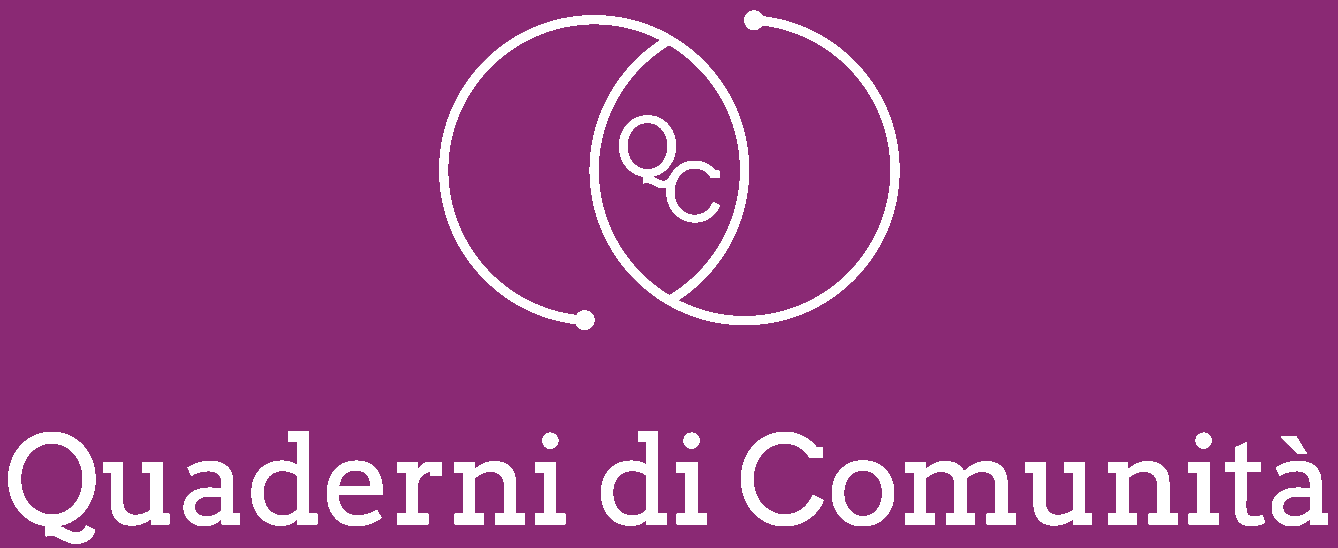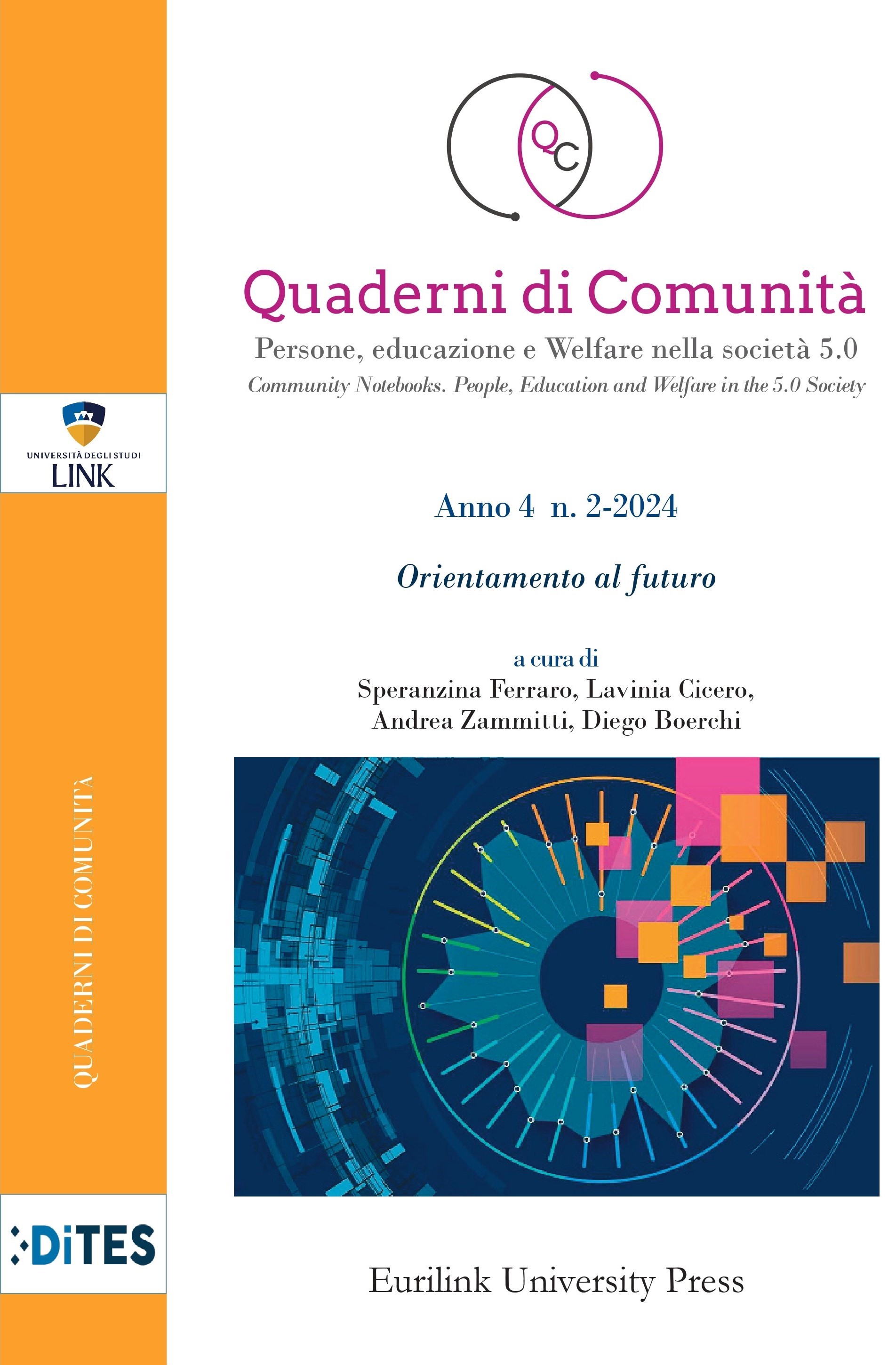Which orientation for which society?
DOI:
https://doi.org/10.61007/QdC.2024.2.299Keywords:
life project, future, visions of society, citizenship, critical orientationAbstract
According to recent research, symptoms of youth unease have increased exponentially in the post-pandemic period, leading to the risk of social withdrawal and mistrust in the future, perceived as a threat rather than a promise. In contrast to attitudes of resigned helplessness, there is a minority presence of young activists expressing a global critique of the dominant socio-economic model.
The contribution intends to pose some questions on today's widespread guidance practices, which, beyond intentions, implicitly lead towards adaptive solutions to the techno-nihilist context, trying to bridge the mismatch between job demand and supply. With reference to critical pedagogy and Sultana's proposals, a theory and practice of critical guidance is deemed possible and desirable.
References
Anelli, M. (2019), «University to work transition» in (IGIER Bocconi) Third annual report “From school to work: educational choices matter”, 28-39.
Antonelli, F. e Tolomelli, A. (2023), «Pedagogia critica: disfare e fare l’educazione nella contemporaneità» in Cultura pedagogica e scenari educativi, 1(2), 98-108. https://doi.org/10.7347/spgs-02-2023-14.
Bauman, Z. (2005), «Vite di scarto», Roma-Bari, Laterza.
Burba, G. (2020), «La responsabilità etica della scuola, filo di Arianna nel labirinto delle scelte» in Rivista Lasalliana 87-3, 273- 282.
Calamandrei, P. (1955), «Discorso sulla Costituzione». https://formazione.indire.it/paths/piero-calamandrei-discorso-sulla-costituzione-26-gennaio-1955.
Censis (2022), (con Consiglio Nazionale dei Giovani e Agenzia Nazionale Giovani), «Generazione Post Pandemia. Bisogni e aspettative dei giovani italiani nel post Covid 19». https://consiglionazionalegiovani.it/wp-content/uploads/2022/10/Giovani-COVID-report_04.09.22.pdf.
Consiglio dell’Unione Europea (2018), Raccomandazione del 22 maggio relativa alle competenze chiave per l’apprendimento permanente. https://eur-lex.europa.eu/legal-content/IT/TXT/PDF/?uri=CELEX32018H0604(01).
European Parliament (2021), «Youth Survey». https://www.europarl.europa.eu/at-your-service/files/be-heard/eurobarometer/2021/youth-survey-2021/report.pdf.
Galimberti, U. (2022), «La condizione giovanile nell’età del nichilismo», Napoli, Orthotes.
Margiotta, U. (2014), «La pedagogia critica e i suoi nemici» in Formazione & Insegnamento, Pensa MultiMedia XII-4-2014, 15-38.
MIM (2022), Decreto n. 328 del 22 dicembre con le Linee guida per l’orientamento.
MIUR (2019), DM 774 del 4 settembre, Linee guida in merito ai percorsi per le competenze trasversali e per l’orientamento.
Morin, E. (2022), «Svegliamoci!», Sesto San Giovanni (Mi), Mimesis. Morin, E. (2015), «Insegnare a vivere. Manifesto per cambiare l’educazione», Milano, Raffaello Cortina.
ONU (2015), Risoluzione adottata dall’Assemblea Generale il 25 settembre. https://unric.org/it/wp-content/uploads/sites/3/2019/11/Agenda-2030-Onu-italia.pdf.
Parente, G. (2021), «Le strategie orientative nei percorsi di scelta scolastica degli studenti delle scuole secondarie di primo grado a Roma» (Tesi di dottorato). https://iris.uniroma1.it/handle/11573/1607605.
Rosina, A. (2008) «L’Italia nella spirale del degiovanimento», https://www.neodemos.info/2008/05/08/litalia-nella-spirale-del-degiovanimento/.
Sharma, Ajay (2016), «STEM-ification of Education. The Zombie Reform Strikes Again» https://jps.library.utoronto.ca/index.php/jaste/issue/view/1762.
Sultana, R. G. (2020), «Lavoro significativo, vite soddisfacenti: l’orientamento professionale ha un ruolo da svolgere», in Lifelong, Lifewide Learning (LLL), V. 16, N. 35, 7-24. https://doi.org/10.19241/lll.v16i35.515.
Sultana, R. G. (2011), «Lifelong guidance, citizen rights and the state: Reclaiming the social contract», in British Journal of Guidance & Counselling, 179-186. DOI 10.1080/03069885.2010.547055.
Downloads
Published
How to Cite
Issue
Section
License
Copyright (c) 2024 Quaderni di comunità. Persone, Educazione e Welfare nella società 5.0

This work is licensed under a Creative Commons Attribution-NonCommercial-NoDerivatives 4.0 International License.







